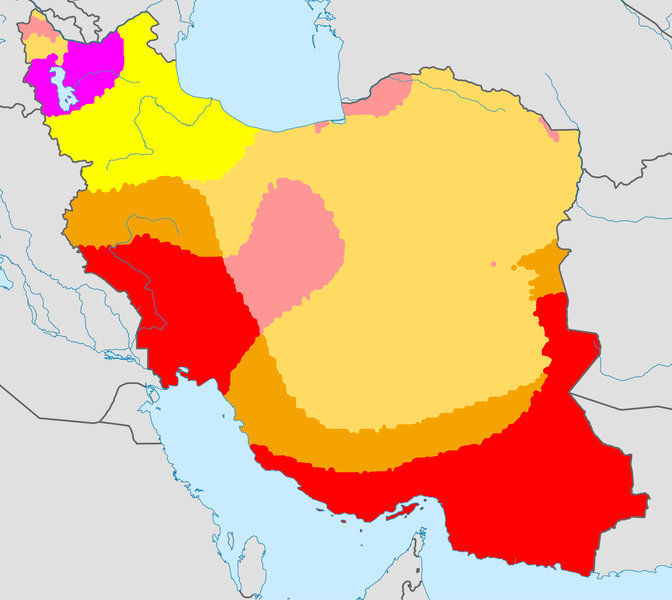|
|
Post by Caliph on Jan 21, 2015 14:49:12 GMT
Iran's climate ranges from arid or semiarid, to subtropical along the Caspian coast and the northern forests. On the northern edge of the country (the Caspian coastal plain) temperatures rarely fall below freezing and the area remains humid for the rest of the year. Summer temperatures rarely exceed 29 °C (84.2 °F). Annual precipitation is 680 mm (26.8 in) in the eastern part of the plain and more than 1,700 mm (66.9 in) in the western part. United Nations Resident Coordinator for Iran Gary Lewis has said that "Water scarcity poses the most severe human security challenge in Iran today". To the west, settlements in the Zagros basin experience lower temperatures, severe winters with below zero average daily temperatures and heavy snowfall. The eastern and central basins are arid, with less than 200 mm (7.9 in) of rain, and have occasional deserts.Average summer temperatures exceed 38 °C (100.4 °F). The coastal plains of the Persian Gulf and Gulf of Oman in southern Iran have mild winters, and very humid and hot summers. The annual precipitation ranges from 135 to 355 mm (5.3 to 14.0 in).  Red:Hot desert climate Pink:Cold desert climate Dark Orange:Hot semi-arid climate Light Orange:Cold semi-arid climate Yello:Hot-summer Mediterranean climate Light Purple:Continental Mediterranean climate |
|